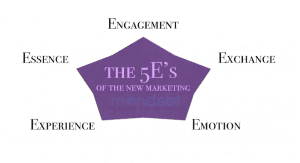Have you ever thought about how to make a dazzling, knock-it-out-of-the-park speech? Making a rockstar speech — where you get a standing ovation — may be something you aspire to do as part of your bucket list? I know that is something I would like to do when I finally get to speak at TED! But, on balance, it should not and cannot be the necessary objective for every speech you deliver. My first piece of advice is to calibrate your expectations with that of the organizer (or the person whose reputation is on the line for bringing you on). One question I always like to ask my contractor: what is the feeling that you want your audience to have at the end of the speech?
Content first

So, how does one go about making a truly great speech, and I mean in practical terms? First things first: a great speech needs to have great content. Secondly, the context within which you deliver the speech is super important, in other words, the room itself, the seating arrangement, the ambient environment, etc. A third and very structuring component is the amount of time given for the speech. The 18-minute limitation at TED is very handy, but it is a specific format to a specific audience. If it’s a one-way speech (e.g. behind a pulpit) without interaction, time is not so much an issue, because you master your own time. I tend to insert as much interactivity as I can, but when time is limited, such interactivity is correspondingly limited. Notwithstanding the above, to prepare for my speeches, I like to use the 5E’s model:
- Engagement
- Exchange
- Emotion
- Experience
- and Essence.
Ensure Engagement
To heighten engagement in a speech, I think of a few important techniques:
- Get the audience hooked from the beginning (use a story, ask a question that the audience would genuinely like to see answered, etc…).
- Always consider what’s in it for the audience (the WIIFM that sits in each participant’s head).
- Bring your good energy with you on stage.
- Don’t forget the back of the room.
Allow for Exchange
- Enable audience participation.
- Use audience involvement as an integral part of the narrative.
- Learn from what the audience says or how they react.
- Allow audience members to exchange with one another.
Bring Emotion
- Make your stories personal.
- Talk about feelings, not just actions.
- Admit mistakes and/or imperfections.
- Consider elements of entertainment (e.g. humour, surprise, games).
Live an Experience
- Make it unique. Even if you might deliver the speech multiple times, find a way to make each delivery a unique experience.
- Make it memorable.
- If possible, make your audience move so they physically experience the moment.
Find the Essence
Last but certainly not least, be essential. The Essence of your speech is about tapping into a bigger thought, a bigger need.
- What about the content (in the speech) is going to make the world a better place? As Sally Hogshead says about marketing, “What is the essence beyond the product (or service) that you are selling?”
- Make sure you are, yourself, congruent with your message — bring those stories to life in your speech. Being authentic, means being consistent in your thoughts and actions, on and off the playing field.
- What about your speech is going to be something people will want to share with their children when tucking them in for bed?
Your thoughts, additions and reactions are welcome!











